Breakinduced replication (BIR) is an efficient homologous recombination (HR) pathway employed to repair a DNA doublestrand break (DSB) when homology is restricted to one end All three major replicative DNA polymerases are required for BIR, including the otherwise nonessential Pol32 subunit Breakinduced replication (BIR) is a way to solve those problems In humans, it is employed chiefly to repair breaks in DNA that cannot be fixed otherwise A new study seeks to tease out BIR's high riskreward arrangement by describing for the first time the beginningtoend sequence in BIR Based on the study in yeast, a DSB repair pathway called breakinduced replication (BIR) is believed to be a major source of replicative GCR Since the mechanistic study of BIR has been mostly carried out in yeast, a model system to study BIR mechanism and its role in suppressing genome instability in mammalian cells is highly in demand

Alternative Lengthening Of Telomeres Through Two Distinct Break Induced Replication Pathways Sciencedirect
Break-induced replication the where the why and the how
Break-induced replication the where the why and the how- Mechanisms preventing BreakInduced Replication during repair of twoended DNA doublestrand breaks Nhung Pham1, Zhenxin Yan1, Anna Malkova3, James E Haber2 and Grzegorz Ira1 1 Baylor College of Medicine, Department of Molecular and Human Genetics, One Baylor Plaza, Houston, TX, USAThe Web's largest and most authoritative acronyms and abbreviations resource




Replication Stress At Microsatellites Causes Dna Double Strand Breaks And Break Induced Replication Journal Of Biological Chemistry
In both of these cases, an alternative mechanism of repair, known as breakinduced replication (BIR) may be able to restore a telomere to the broken chromosome and thus preserve its integrity In S cerevisiae, events consistent with BIR have been directly demonstrated in several ways First, when HO endonuclease is used to cleave off the endBreakInduced Replication The Where, The Why, and The How Publication date July 18Source Trends in Genetics, Volume 34, Issue 7Author(s) J Kramara, B Osia, A MalkovaBreakinduced replication (BIR) is a pathway that repairs oneBreakInduced Replication The Where, The Why, and The How J Kramara,2 B Osia,2 and A Malkova1,* Breakinduced replication (BIR) is a pathway that repairs oneended doublestrand breaks (DSBs) For decades, yeast model systems offered the only opportunities to study eukaryotic BIR These studies described an unusual mode
Breakinduced replication (BIR) is a repair process initiated by oneended DSBs at collapsed replication forks and extended by conservative DNA replication 59,60,61 The yeast Pol32 and human POLD3/4 proteins, accessory subunits of the DNA polymerase, are important for BIR 56 , 62 , 63Reviewed in 41 In addition to its role in late replication, RDR in bacteriophage T4 was shown to play important roles in DSB repair and in the repair of broken replication forks 42–44 (see also 9,11,41,45 and references therein)Breakinduced replication functions and molecular mechanism Curr Opin Genet Dev 13 Jun 18;
Physiological Relevance of BreakInduced Replication The importance of recombination for late replication of bacteriophage T416 and in the repair of collapsed replication forks in Escherichia coli has been clearly demonstrated4,17 In bacteria replication initiates from a single origin, proceeds bidirectionally, andThe Break Induced replication pathway (BIR) is a DBSR that depends on homologous recombination at microhomology domains and enables telomere capture 77– 77BreakInduced Replication The Where, The Why, and The How Kramara J(1), Osia B(1), Malkova A(2) Author information (1)These authors contributed equally to this work (2)Department of Biology, University of Iowa, Iowa City, IA , USA Electronic address annamalkova@uiowaedu




Break Induced Replication Occurs By Conservative Dna Synthesis Pnas




Pdf Break Induced Dna Replication Semantic Scholar
However, DSBs that arise by replication fork collapse or by erosion of uncapped telomeres have only one free end and are thought to repair by strand invasion into a homologous duplex DNA followed by replication to the chromosome end (breakinduced replication, BIR)Breakinduced replication (BIR) refers to recombinationdependent DNA synthesis initiated from one end of a DNA doublestrand break and can extend for more than 100 kb BIR initiates by Rad51catalyzed strand invasion, but the mechanism for DNA synthesis is not known Breakinduced replication (BIR) is a nonreciprocal recombinationdependent replication process that is an effective mechanism to repair a broken chromosome We review key roles played by BIR in maintaining genome integrity, including restarting DNA replication at broken replication forks and maintaining telomeres in the absence of telomerase
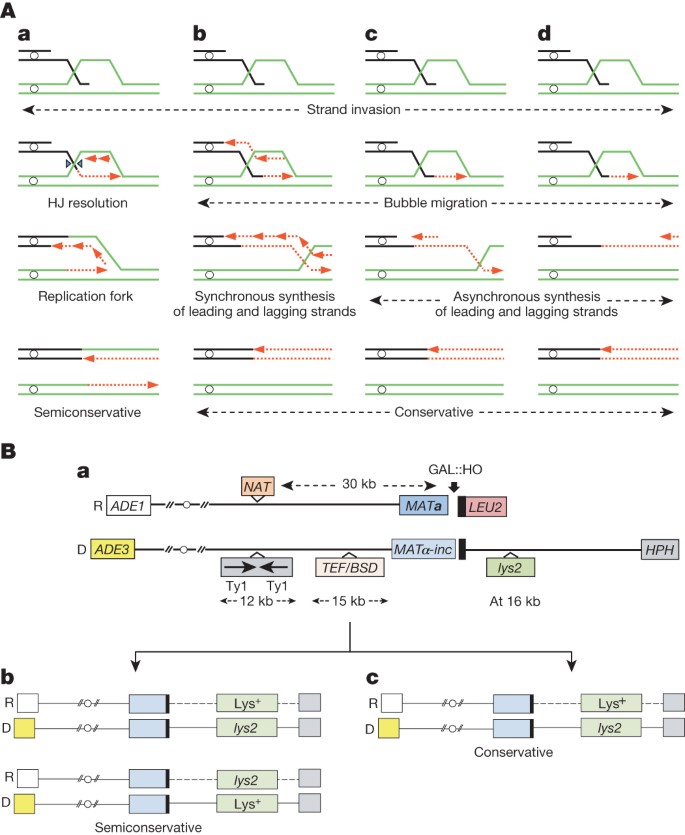



Migrating Bubble During Break Induced Replication Drives Conservative Dna Synthesis Nature




Replication Stress In Mammalian Cells And Its Consequences For Mitosis Abstract Europe Pmc
Bacterial replication origins Most bacterial chromosomes are circular and contain a single origin of chromosomal replication (oriC)Bacterial oriC regions are surprisingly diverse in size (ranging from 250 bp to 2 kbp), sequence, and organization ;Break Induced Replication repairs collapsed forks nicks and lesions cause fork collapse that lead to DSB in the case of lesion > fork collapse > fork regression = DSB How does Break Induced replication repair collapsed forks BIR rescues a collapsed replication fork by strand invasion;The role of breakinduced replication in largescale expansions of (CAG) n /(CTG) n repeats Jane C Kim 1,2, Samantha T Harris 1, Teresa Dinter , Kartik A Shah ,2 & Sergei M Mirkin Expansions of (CAG) n /(CTG) n trinucleotide repeats are responsible for over a dozen neuromuscular and neurodegenerative disorders
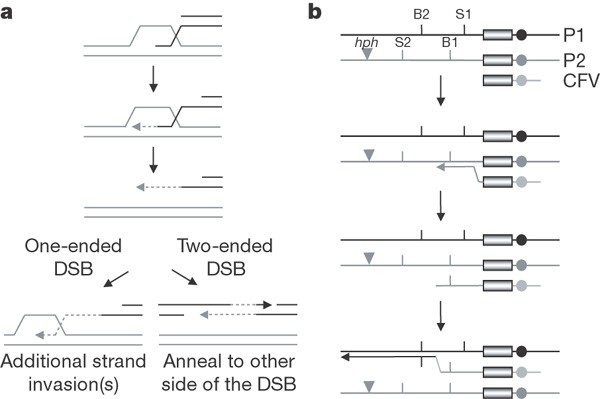



Template Switching During Break Induced Replication Nature



1
Breakinduced replication (BIR) is a pathway that repairs oneended doublestrand breaks (DSBs) For decades, yeast model systems offered the only opportunities to study eukaryotic BIR These studies described an unusual mode of BIR synthesis that is carried out by a migrating bubble and showsGenetic instabilities, including mutations and chromosomal rearrangements, lead to cancer and other diseases in humans and play an important role in evolution A frequent cause of genetic instabilities is doublestrand DNA breaks (DSBs), which may arise from a wide range of exogeneous and endogeneous cellular factors Although the repair of DSBs is required, some Breakinduced replication (BIR) is a nonreciprocal recombinationdependent replication process that is an effective mechanism to repair a broken chromosome We review key roles played by BIR in maintaining genome integrity, including restarting DNA replication at broken replication forks and maintaining telomeres in the absence of telomerase Previous studies



1
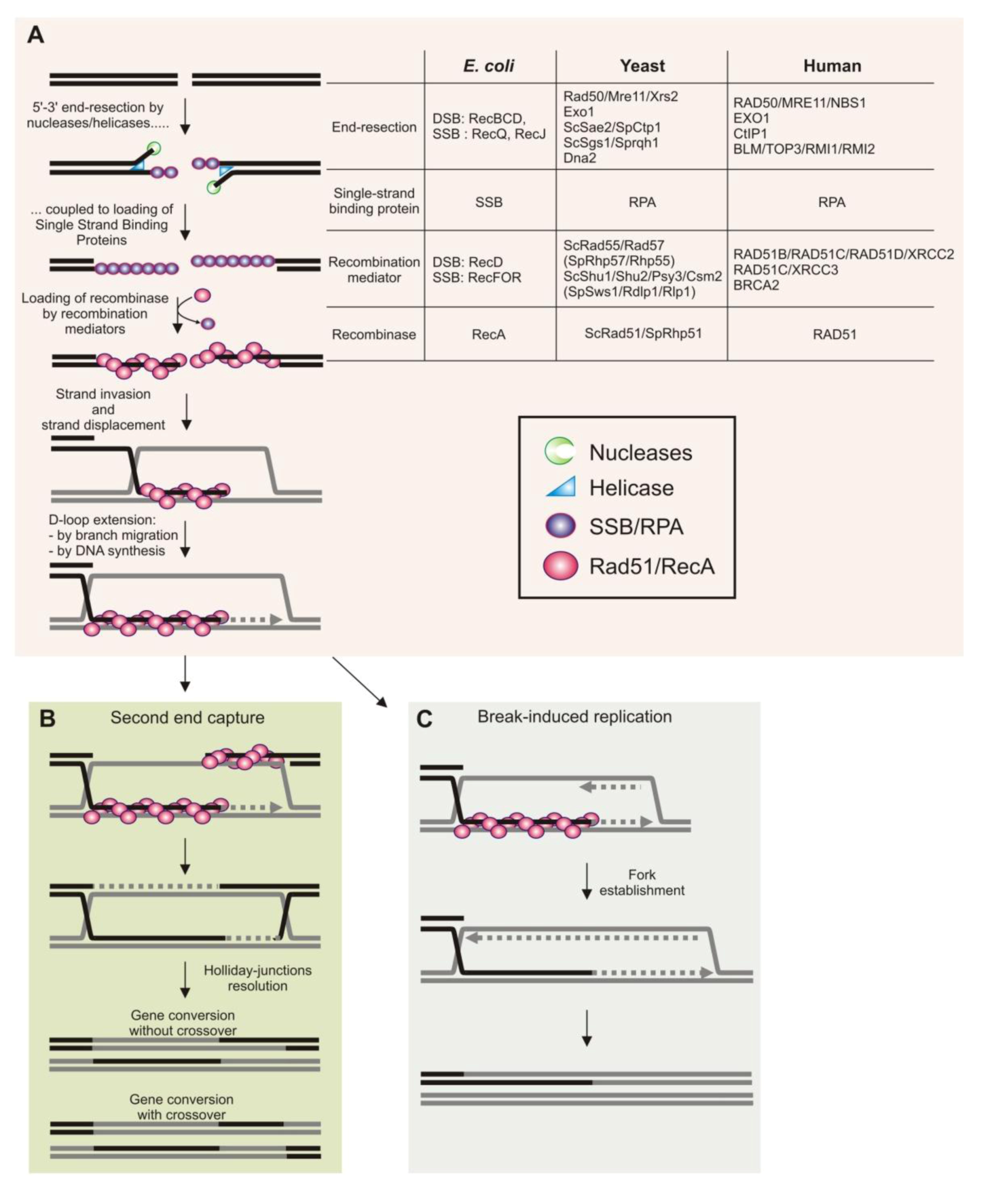



Biomolecules Free Full Text Homologous Recombination As A Replication Fork Escort Fork Protection And Recovery Html
Breakinduced replication plays a prominent role in longrange repeatmediated deletion Qing Hu Department of Molecular Medicine, The Scripps Research Institute, La Jolla, CA, USA Search for more papers by this author Hongyan Lu Role of the Pif1PCNA Complex in Pol δDependent Strand Displacement DNA Synthesis and BreakInduced Replication Buzovetsky O(1), Kwon Y(1), Pham NT(2), Kim C(1), Ira G(3), Sung P(4), Xiong Y(5) Author information (1)Department of Molecular Biophysics and Biochemistry, Yale University School of Medicine, New Haven, CT 065, USAFind out what is the most common shorthand of breakinduced replication on Abbreviationscom!




Homology Requirements And Competition Between Gene Conversion And Break Induced Replication During Double Strand Break Repair Sciencedirect
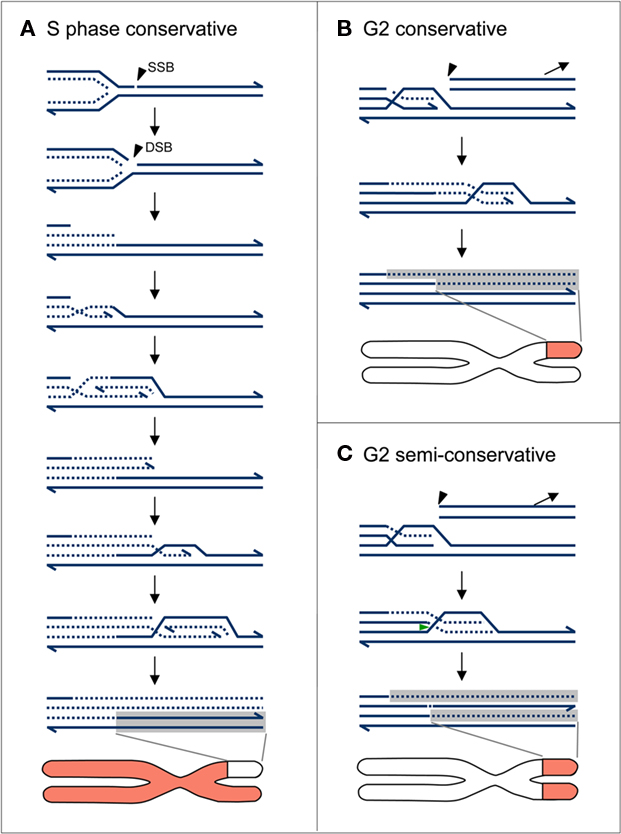



Frontiers No Evidence For Break Induced Replication In A Higher Plant But Break Induced Conversion May Occur Plant Science
The interplay between replication and recombination is complex in terms of both mechanism and integration within DNA metabolism At the heart of this interplay is the requirement for singlestranded DNA (ssDNA), the substrate for DNAstrandexchange proteins, to initiate recombination (Cox 07b;Molecular Biology BreakInduced DNA Replication Recombinationdependent DNA replication, often called breakinduced replication (BIR), was initially invoked to explain recombination events in bacteriophage but it has recently been recognized as a fundamentally important mechanism to repair doublestrand chromosome breaks in eukaryotes (iii) Breakinduced replication (BIR) is initiated when only one broken end is available for strand invasion The invasion triggers DNA repair synthesis proceeding via a migrating bubble with asynchronous leading and laggingstrand synthesis, and leads to conservative inheritance of newly synthesized DNA




Mammalian Rad52 Functions In Break Induced Replication Repair Of Collapsed Dna Replication Forks Sciencedirect




Break Induced Replication The Where The Why And The How Trends In Genetics
San Filippo et al 08)Breakinduced replication (BIR) is an important pathway specializing in repair of oneended doublestrand DNA breaks (DSBs) This type of DSB break typically arises at collapsed replication forks or at eroded telomeres BIR initiates by invasion of a broken DNA end into a homologous template followeArticle "BreakInduced Replication The Where, The Why, and The How" Detailed information of the JGLOBAL is a service based on the concept of Linking, Expanding, and Sparking, linking science and technology information which hitherto stood alone to support the generation of ideas By linking the information entered, we provide opportunities to make unexpected discoveries and
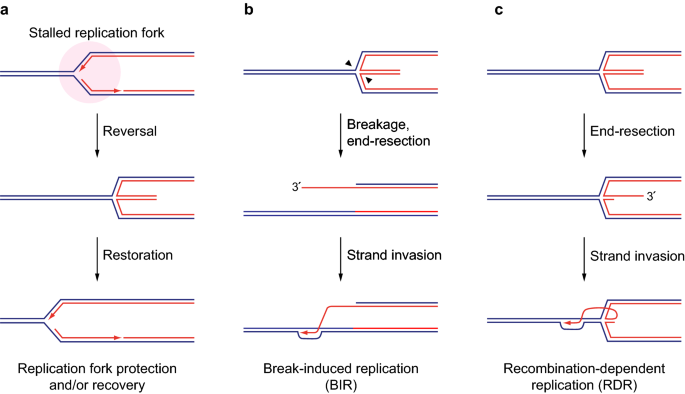



Limiting Homologous Recombination At Stalled Replication Forks Is Essential For Cell Viability Dna2 To The Rescue Springerlink
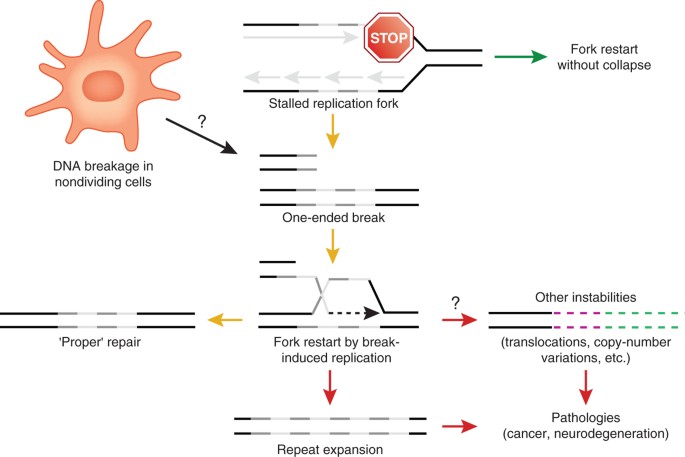



Break Induced Replication An Unhealthy Choice For Stress Relief Nature Structural Molecular Biology
Recombinationdependent DNA replication, often called breakinduced replication (BIR), was initially invoked to explain recombination events in bacteriophage but it has recently been recognized as a fundamentally important mechanism to repair doublestrand chromosome breaks in eukaryotesAbstract Breakinduced replication (BIR) is an important pathway specializing in repair of oneended doublestrand DNA breaks (DSBs) This type of DSB break typically arises at collapsed replication forks or at eroded telomeres BIR initiates by invasion of a broken DNA end into a homologous template followed by initiation of DNA synthesis that can proceed for hundreds ofBreakinduced replication (BIR) is a pathway that repairs oneended doublestrand breaks (DSBs) For decades, yeast model systems offered the only opportunities to study eukaryotic BIR These studies described an unusual mode of BIR synthesis that is carried out by a migrating bubble and shows conservative inheritance of newly synthesized DNA, leading to genomic instabilities like




Investigation Of Break Induced Replication In Yeast Sciencedirect




Figure 4 From A Microhomology Mediated Break Induced Replication Model For The Origin Of Human Copy Number Variation Semantic Scholar
These 6 survivors could have healed the broken chromosome by addition of a new telomere distal to the BamHI site or by breakinduced replication using its homolog as a template If survivors had healed the broken chromosome by de novo telomere addition, then Hin dIII fragments should also be different, and one of them should differ from the parent chromosomeBreakInduced Replication Is Highly Inaccurate Angela Deem1, Andrea Keszthelyi2, Tiffany Blackgrove1, Alexandra Vayl1, Barbara Coffey1, Ruchi Mathur1, Andrei Chabes2,3, Anna Malkova1* 1Department of Biology, School of Science, IUPUI, Indianapolis, Indiana, United States of America, 2Department of Medical Biochemistry and Biophysics, Umea˚ University,Breakinduced replication requires all essential DNA replication factors except those specific for preRC assembly John R Lydeard,1 Zachary LipkinMoore,1 YiJun Sheu,2 Bruce Stillman,2 Peter M Burgers,3 and James E Haber1,4 1Department of Biology and Rosenstiel Basic Medical Sciences Research Center, Brandeis University, Waltham, Massachusetts , USA;




The Many Roles Of Pcna In Eukaryotic Dna Replication Abstract Europe Pmc
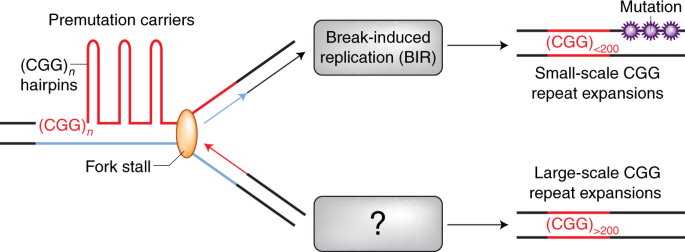



Break Induced Replication Sparks Cgg Repeat Instability Nature Structural Molecular Biology
Nonetheless, their ability to drive replication onset typically depends on sequencespecific readout of consensus DNA elements In human cancers, oncogene activation interferes with DNA replication, leading to DNA replication stress and DNA doublestrand breaks (DSBs) Costantino et al (p 1, published online 5 December) identified two subunits of DNA polymerase delta, POL3 and POL4, as critical for survival of DNA replication stress in human cells Both subunits were required for breakinduced replicationLooking for the abbreviation of breakinduced replication?




Alternative Lengthening Of Telomeres Mediated By Mitotic Dna Synthesis Engages Break Induced Replication Processes Molecular And Cellular Biology




Break Induced Replication Rescues Collapsed Forks A Dse At A Collapsed Download Scientific Diagram
Authors Malkova A, Ira G Abstract Breakinduced replication (BIR) is the pathway of homologous recombination (HR) conserved from phages to eukaryotes that serves to repair DNA breaks that have only one end BIR contributes to the repair of broken replication forks and allows telomere l Breakinduced replication (BIR) is a pathway that repairs oneended doublestrand breaks (DSBs) For decades, yeast model systems offered the only opportunities toSimilar to BIR in yeast, mammalian breakinduced telomere synthesis underlies alternative lengthening of telomeres (ALT) and proceeds with conservative inheritance of newly synthesized DNA Breakinduced replication (BIR) is a pathway that repairs oneended doublestrand breaks (DSBs)




Break Induced Replication The Where The Why And The How Trends In Genetics
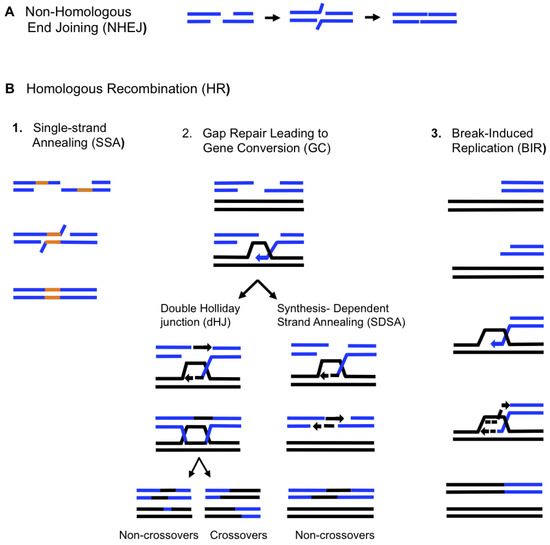



Biomolecules Free Full Text Break Induced Replication And Genome Stability Html
BIR was first identified in the late replication phase of bacteriophage T4 where it was described as RDR 40; Breakinduced replication (BIR) presents an interesting case of largescale DNA duplication that occurs in the context of DNA repair In this study we employed a yeastbased system to investigate the level of mutagenesis associated with BIR compared to mutagenesis during normal DNA replicationBreakInduced Replication The Where, The Why, and The How Breakinduced replication (BIR) is a pathway that repairs oneended doublestrand breaks (DSBs) For decades, yeast model systems offered the only opportunities to study eukaryotic BIR




Dna Polymerase Delta Synthesizes Both Strands During Break Induced Replication Sciencedirect




Replication Stress At Microsatellites Causes Dna Double Strand Breaks And Break Induced Replication Journal Of Biological Chemistry
However, DSBs that arise by replication fork collapse or by erosion of uncapped telomeres have only one free end and are thought to repair by strand invasion into a homologous duplex DNA followed by replication to the chromosome end (breakinduced replication, BIR) As BIR from one of the two ends of a DSB would result in a long tract of LOH it(iii) Breakinduced replication (BIR) is initiated when only one broken end is available for strand invasion The invasion triggers DNA repair synthesis proceeding via a migrating bubble with asynchronous leading and laggingstrand synthesis, and leads to conservative inheritance of newly synthesized DNA
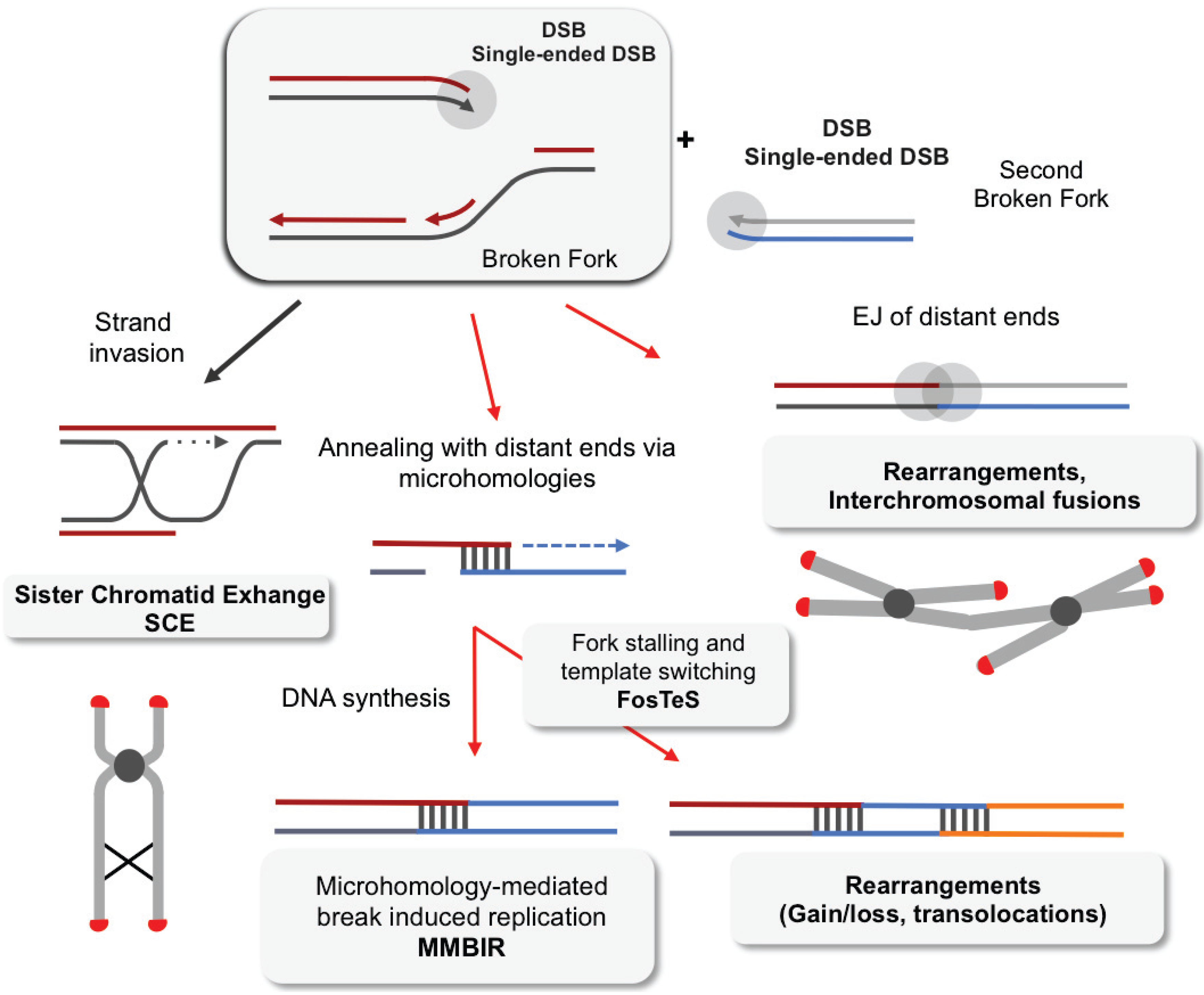



Genes Free Full Text Replication Stress In Mammalian Cells And Its Consequences For Mitosis Html




Mechanisms Restraining Break Induced Replication At Two Ended Dna Double Strand Breaks The Embo Journal




Pdf Break Induced Replication What Is It And What Is It For




Ijms Free Full Text Using A Human Papillomavirus Model To Study Dna Replication And Repair Of Wild Type And Damaged Dna Templates In Mammalian Cells Html




Figure 3 From Break Induced Dna Replication Semantic Scholar



Double Strand Break Induced Replication




Mechanisms Restraining Break Induced Replication At Two Ended Dna Double Strand Breaks The Embo Journal



Rad51 Independent Break Induced Replication To Repair A Broken Chromosome Depends On A Distant Enhancer Site




Pdf Break Induced Replication And Genome Stability Semantic Scholar




Alternative Lengthening Of Telomeres Through Two Distinct Break Induced Replication Pathways Sciencedirect



Plos Genetics A Microhomology Mediated Break Induced Replication Model For The Origin Of Human Copy Number Variation
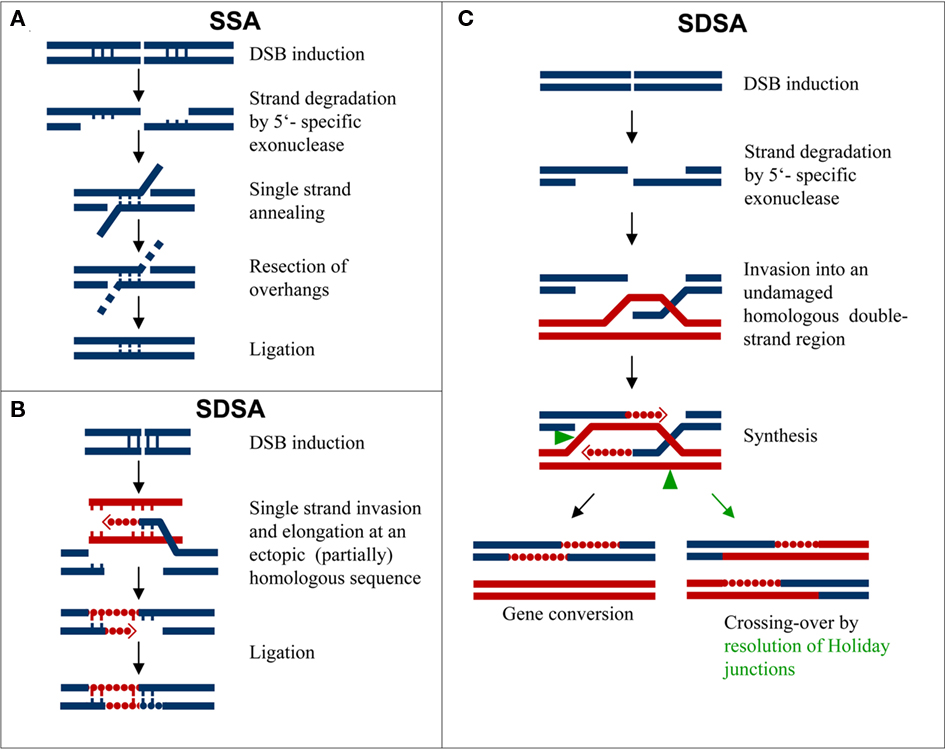



Frontiers No Evidence For Break Induced Replication In A Higher Plant But Break Induced Conversion May Occur Plant Science




Break Induced Replication If One End Of A Double Strand Break Dsb Download Scientific Diagram




Repair Of A Collapsed Replication Fork By Break Induced Replication Download Scientific Diagram




Break Induced Replication The Where The Why And The How Trends In Genetics
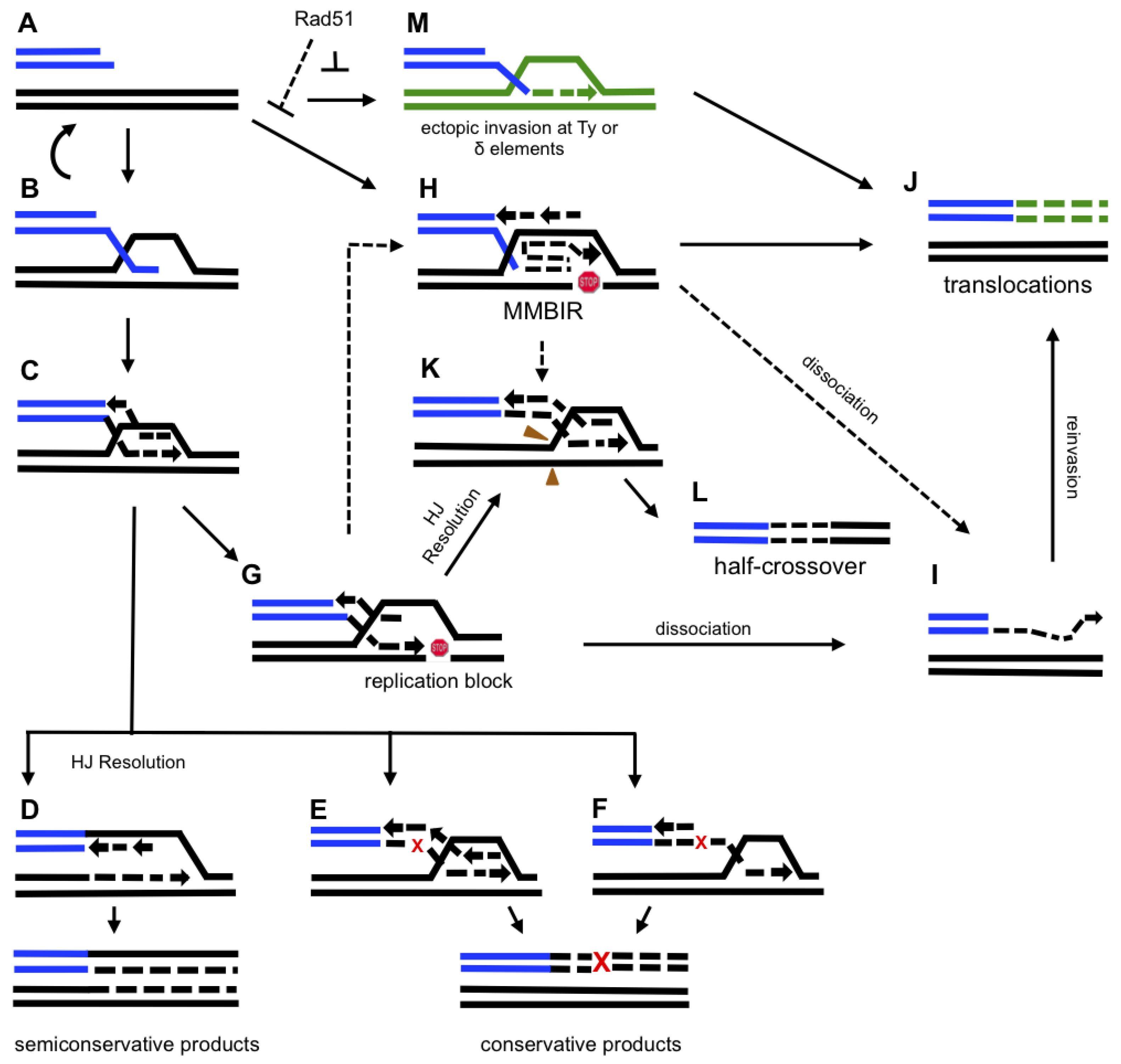



Biomolecules Free Full Text Break Induced Replication And Genome Stability Html




Mechanisms And Consequences Of Break Induced Replication Springerlink




Rpa Stabilization Of Single Stranded Dna Is Critical For Break Induced Replication Sciencedirect




Break Induced Replication A Review And An Example In Budding Yeast Pnas



Strand Break Induced Replication Fork Collapse Leads To C Circles C Overhangs And Telomeric Recombination




Mitotic Dna Synthesis Midas Occurs Via A Break Induced Replication Download Scientific Diagram
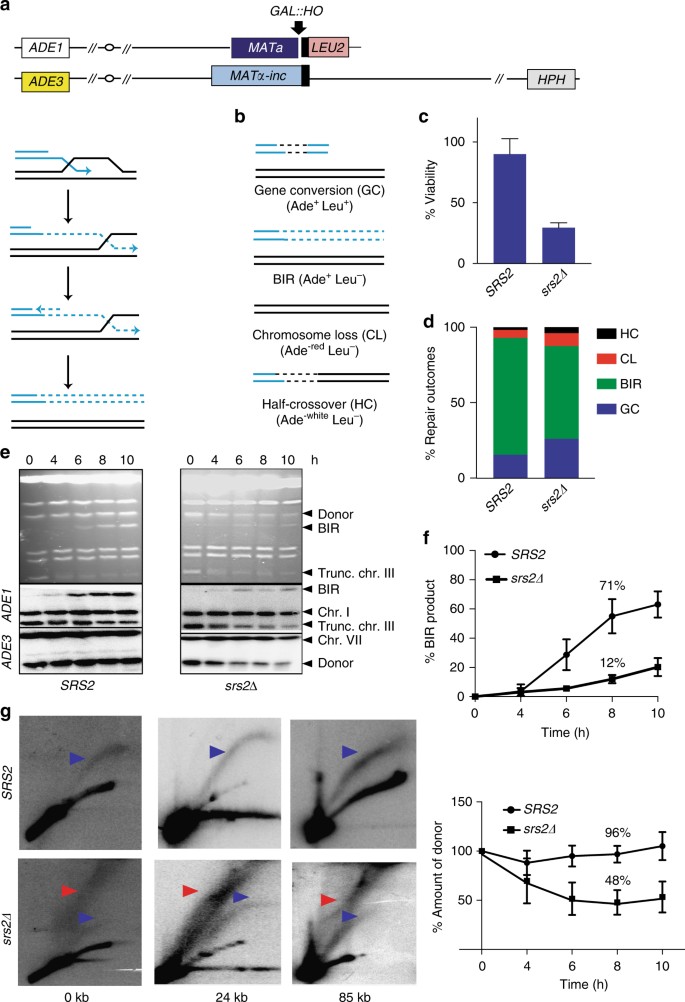



Break Induced Replication Promotes Formation Of Lethal Joint Molecules Dissolved By Srs2 Nature Communications




Break Induced Replication Shown Are Models Of Break Induced Download Scientific Diagram




Mechanistic Model Of Microhomology Mediated Break Induced Replication Download Scientific Diagram




Pdf Break Induced Replication A Review And An Example In Budding Yeast Semantic Scholar



1




Genomic Rearrangements Induced By Unscheduled Dna Double Strand Breaks In Somatic Mammalian Cells So 17 The Febs Journal Wiley Online Library




Loss Of Sea3 Impacts Colony Formation In The Break Induced Replication Download Scientific Diagram




Dna Recombination The Replication Connection Trends In Biochemical Sciences




Figure 2 From Break Induced Dna Replication Semantic Scholar



Break Induced Replication Requires All Essential Dna Replication Factors Except Those Specific For Pre Rc Assembly




Break Induced Replication Occurs By Conservative Dna Synthesis Pnas




Template Switching During Break Induced Replication Is Promoted By The Mph1 Helicase In Saccharomyces Cerevisiae Genetics




Summary Of Break Induced Replication Jim Haber Brandeis Youtube




Template Switching During Break Induced Replication Semantic Scholar




Break Induced Replication Repair Of Damaged Forks Induces Genomic Duplications In Human Cells Science




Proposed Mechanisms Of Alt A Break Induced Replication A And B Download Scientific Diagram




Method Of Dna Repair Linked To Higher Likelihood Of Genetic Mutation Eurekalert Science News




Break Induced Replication The Where The Why And The How Trends In Genetics




A Break Induced Replication Model Ofrad51 Independent Dsb Repair After Download Scientific Diagram




Alternative Lengthening Of Telomeres Mediated By Mitotic Dna Synthesis Engages Break Induced Replication Processes Molecular And Cellular Biology




Template Switching During Break Induced Replication Nature
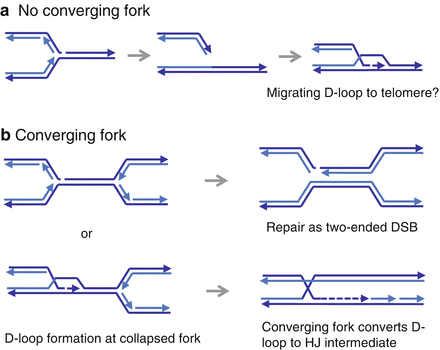



Mechanisms And Consequences Of Break Induced Replication Springerlink




Template Switching During Break Induced Replication Semantic Scholar




Illustration Of Break Induced Replication Telomere Maintenance And De Download Scientific Diagram



Rad51 Independent Break Induced Replication To Repair A Broken Chromosome Depends On A Distant Enhancer Site



Plos Genetics Break Induced Replication Requires Dna Damage Induced Phosphorylation Of Pif1 And Leads To Telomere Lengthening



2




Theoretical Models For Alt Mechanism A Break Induced Replication Download Scientific Diagram



A Microhomology Mediated Break Induced Replication Model For The Origin Of Human Copy Number Variation




Pdf Break Induced Replication Occurs By Conservative Dna Synthesis Semantic Scholar



Plos Genetics Cascades Of Genetic Instability Resulting From Compromised Break Induced Replication




Break Induced Replication Repair Of Damaged Forks Induces Genomic Duplications In Human Cells Science




Break Induced Replication Repair Of Damaged Forks Induces Genomic Duplications In Human Cells Science



2




Break Induced Replication The Where The Why And The How Trends In Genetics




Partners And Pathways Trends In Genetics



Plos Genetics A Microhomology Mediated Break Induced Replication Model For The Origin Of Human Copy Number Variation




Break Induced Replication The Where The Why And The How Trends In Genetics




Trf1 Averts Chromatin Remodelling Recombination And Replication Dependent Break Induced Replication At Mouse Telomeres Elife




Pdf Break Induced Replication What Is It And What Is It For




Brca2 Abrogation Engages With The Alternative Lengthening Of Telomeres Via Break Induced Replication Kwon 19 The Febs Journal Wiley Online Library




Mechanistic Model Of Microhomology Mediated Break Induced Replication Download Scientific Diagram



2




Mammalian Rad52 Functions In Break Induced Replication Repair Of Collapsed Dna Replication Forks Sciencedirect



1




Break Induced Replication Plays A Prominent Role In Long Range Repeat Mediated Deletion The Embo Journal



2




Break Induced Replication Can Repair Double Strand Breaks




Break Induced Replication Functions And Molecular Mechanism Sciencedirect



Plos Biology Break Induced Replication Is Highly Inaccurate




Pif1 Helicase Promotes Break Induced Replication In Mammalian Cells The Embo Journal




Break Induced Replication An Unusual Type Of Dna Synthesis Genomic Instability
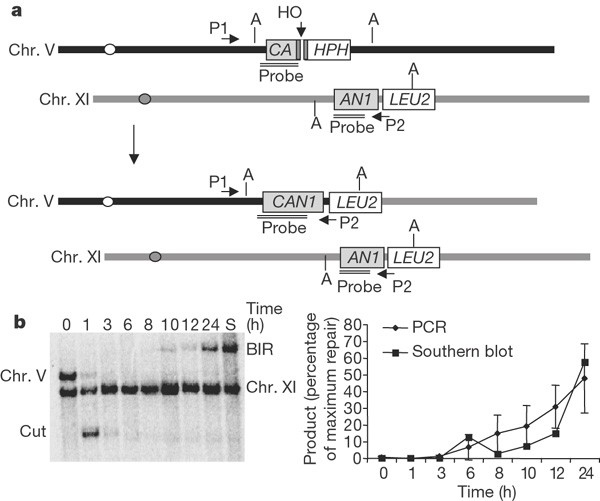



Break Induced Replication And Telomerase Independent Telomere Maintenance Require Pol32 Nature




Break Induced Replication Assay A Schematic Of The Assay I Scei Download Scientific Diagram



Break Induced Replication Requires All Essential Dna Replication Factors Except Those Specific For Pre Rc Assembly



Plos Genetics A Microhomology Mediated Break Induced Replication Model For The Origin Of Human Copy Number Variation




Illustration Of Break Induced Replication Telomere Maintenance And De Download Scientific Diagram




File Joining Of Single Ended Double Strand Breaks Could Lead To Rearrangements Png Wikimedia Commons




Break Induced Replication Jim Haber Brandeis Youtube



0 件のコメント:
コメントを投稿